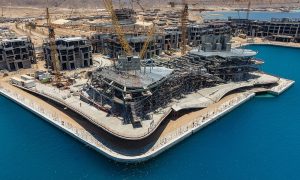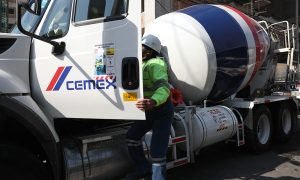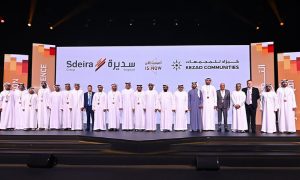Saudi Arabia’s construction sector in focus
Faithful+Gould’s David Clifton weighs in on the largest economy in the Middle East, and discusses how the building sector will shape up in the coming months

The initial OPEC cuts briefly supported the oil market in the $50-55/barrel range. However, the market has dropped back into the mid to high $40s, and conversations have now commenced around further cuts in supply. KSA forecasting was based on an average of $51/barrel for 2017.
To achieve Saudi Arabia’s planned reduction of its budget deficit from 17% to 9%, it seems that further production cuts are required to bolster a significant recovery in the oil price. At present, the deficit has the potential to be slightly worse than forecast.
In the twelve months to Q1 2017, construction as a percentage of GDP contracted from 7% to 6.2% as backlogs continued to fall and awards in late 2016 failed to fill the gaps. A good start to the year was followed by a slow second quarter, indicating the market is still in some flux. The committed major schemes from the Crown Prince for late 2017 need to flow through to stem the industry’s falling level of work.
Within the GCC, political turmoil has weighed on the industry in general and construction has felt the effects as badly as other sectors. Q1 in KSA marked a surge of industry awards to circa $11bn, compared to a quiet Q4 2016. This has fallen back significantly in Q2 to an estimated $5bn, which reflects the region, with no GCC country performing as strongly as in Q1.
Other factors weighing on the market have been Ramadan falling just prior to the traditional
quiet period of the summer holiday season, liquidity still moving its way into the industry and the oil price being range bound. With alternative financing working its way through the government sector, we have seen significant moves to market in aviation, power and water.
Cause and Effect
GACA has so far awarded five airports (King Khalid Riyadh terminal upgrades, Qassim, Hail, Taif and Yanbu) in 2017 at an estimated $4.9bn, making it the stand-out client in KSA in 2017 with nearly 30% of awards by value YTD. Numerous other schemes are still to come to market or be awarded, as GACA commences the process of privatising several of its key assets. The
growth in this sector is driven by solid commercial fundamentals.
Demand is expanding from a growing, young population that increasingly demands connectivity, and the private sector was expected to start the recovery in the construction industry in 2017. However, with the focus on real estate in the sector – even factoring in lower costs of construction – the headwinds faced in real estate have continued, with a near 10% fall in sales prices compared to 2016. This has made the viability of numerous schemes challenging, even when factoring in the upcoming ‘white land tax’. However, this should drive focus towards the affordable end of the market, which is currently very poorly supplied.
The effects of aligning the industry pipeline of projects and programmes to countries’ requirements are becoming evident. Year-on-year, there has been a drop of over 5% in schemes either in the pipeline or being built. This can be in part explained by the contract completions and lack of awards, although certain trophy schemes have disappeared already from the pre-contract stages or have been reduced in scale. This trend is expected to continue with PWC’s reprioritisation or cancellation of schemes across ministries on behalf of the Ministry of Planning and Economy. However, the mid-term probability of schemes in the pipeline actually moving forward has increased.
The government sector is now starting to apply project management office (PMO) processes and procedures designed to deliver best practice and transparency within ministries and government-owned organisations. Under the stewardship of the NPMO (Mashroat), several government entities are in the process of procuring or rolling out their own PMO, although this process has taken somewhat longer than expected. The effects of this roll-out will only be felt during 2018 and beyond, so the need to prioritise projects by exception is critical, if the industry is to survive at a suitable scale to deliver in the future.
Makkah Metro has taken time to move forward, and this scheme could be awarded prior to the end of 2017 (and is therefore included in our awards forecast). Tendering activity in H1 has been relatively subdued in terms of value. Numerous bids have been in the market from private, semi-government and indeed some government entities, but most schemes haven’t been of a size to support the quantum of workers or supply chain.
As an industry, there is estimated to be a circa $60bn gap in the backlogs across the region. This in turn has placed further pressure on the whole contracting supply chain. Although an upturn is expected, and though regionally awards in H1 have outperformed H1 2016 by 15%, it should be noted that 2016 was the worst H1 for more than five years. With $16bn of awards in KSA in 2017 to date, our forecast of $27bn for the full year may need to be revised upwards if the Crown Prince’s commitment to major awards later this year occurs.
























